Today our site will talk about simple ways remove stains from tablet screen.
What to do if it appears?
In the century modern technologies and development touch screens common problem image defects appeared. Either someone was persistently pointing his finger at the screen with all his might, or the factory worker was not performing his duties in good faith, or maybe it was due to an accident, like the device falling. One way or another, if you have a smudge on your tablet screen, don’t worry, there are a few simple and effective ways correct the current situation. Just check first if you have removed the screen, because maybe it’s just an air bubble that’s bothering you. If A white spot appeared on the tablet screen contact immediately service center and find out the causes of the problem.
If the tablet is functioning properly, but the stain on the screen looks like oil, that is, like when you press on an LCD monitor, it may be a factory defect. Are there ways to fix this disease yourself? Of course have. Such a marriage sometimes occurs among Galaxy Tab 10.1, so don’t be discouraged, now we will tell you a secret way to fix the situation.
As funny as it may sound, turn to your freezer for help. Or rather, what is stored in it. Anything will do, as long as it’s cold, even a pancake with meat, even a piece of ice. Just be sure to put what you choose in a bag, otherwise you risk damaging the tablet even more, because frozen food has a tendency to thaw. Next, apply the ice pack to the stain and leave for 15 minutes. Once you remove the source of the cold, you can watch the irritating spot disappear.
Some experts recommend the simplest method - you need to take a suction cup, attach it to a spot on the screen and simply pull it to the side, to the very edge, where it will no longer interfere with the eyes and finger or simply go out of sight.
An effective way to remove stains is by heating. This method will help you if the cooling option only worsened the situation and increased the size of the defect. You just need to heat the “injured” area. The easiest way to do this is with a hairdryer, that is, with hot air. The process may take some time, perhaps not even five minutes, just periodically give the device a break, do not heat it too much, who knows what could be damaged or melted, because there are so many necessary small parts inside. Once it cools down, you may see the stains on your tablet simply disappear and you will be filled with joy.
How to remove a stain from a tablet display
Well, the easiest way, which does not require any additional artifacts, is simple pressure; you only need your magic hands. You need to press on the back cover exactly from the side where the stain on the tablet screen is located, directly on the stain, only from the back. In this case, your palms should very tightly grasp the display along the edges of the device. Press on the stain for a few seconds and release. If you see that the spot has somewhat decreased in size, then continue rhythmic pressure until the screen begins to delight you with pure shine and smoothness.
As you can see, there is nothing difficult in eliminating some problems at home using improvised means that anyone can find. Depending on the reaction to a particular action, you can choose the option that suits you, and it will shine again. If none of the described methods suits you, then you will still have to contact a service center, where they will definitely help you fix everything and explain the cause of the defect. But statistics say that in the vast majority of cases, problems of this kind can be corrected independently using available means. Enjoy your device and never give up. If so, then it’s worth finding out the cause and fixing the breakdown.
Spot on tablet screen repair video
Have you ever noticed strange spots on the screen of your smartphone or tablet? The appearance of any spots or streaks on the device screen indicates a malfunction of the display module. Today we will talk about the reasons for their appearance.
Problems with the backlight
Moisture
Quite often, moisture penetration into the device causes stains to appear. The backlight of LCD displays consists of films, an inverter and lamps. The LEDs shine on the side of the plate, and the films scatter the light, forming a uniform backlight on the screen.
If liquid penetrates between the layers of film, they stick together. Where they touch, the light is refracted at the wrong angle and a spot appears on the screen.
As a rule, it has an irregular shape and is characterized by increased brightness. At different angles of inclination, the spot will change its shape or will not be noticeable at all.
If your device has an AMOLED display, then you have no reason to worry. Such screens have a different backlight technology. If a small amount of liquid gets inside the device, a stain will not appear.
If you have problems with backlit iPhone, it can be replaced. You can purchase a new backlight for the display.
Manufacturing defects
Stain due to a manufacturing defect occurs during display assembly and very often appears to be a stain caused by moisture. The manufacturer may incorrectly select the length of the screws, which is why they rest against the back of the display and lead to the films being compressed together.
Such a spot has an oval shape and does not change at different angles. By the same principle, stains are formed from foreign objects, such as sand.
Occurs in devices in which the manufacturer has not made the correct heat sink. In the place where the device overheats, the films are deformed from constant exposure to high temperature. After the smartphone or tablet cools down, it no longer takes its original shape and a spot forms at the point of overheating. Most often, spots from overheating appear at the ends of the display and have a yellow tint. This spot is darker in the middle and lighter towards the edges.
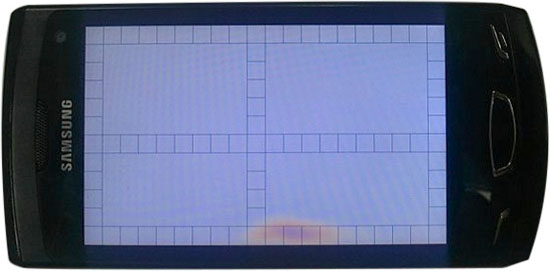
Overheating spots do not change shape from different viewing angles and may become stronger over time.
LED backlight malfunction
LED backlight problems most often manifested by the appearance of a local black spot or deterioration of the backlight in general. The spot forms where the LEDs fail.
Backlight repair– a rather labor-intensive process and takes a lot of time. If the backlight of a smartphone or tablet is broken, it is recommended to replace the display module.
Display problems
After a fall or impact, the image on some part of the screen disappears - this is a sign of a broken display. A spot of this origin most often has an irregular shape, cracks may spread from it, and if you press on it, its size may increase, and its shape may also change.
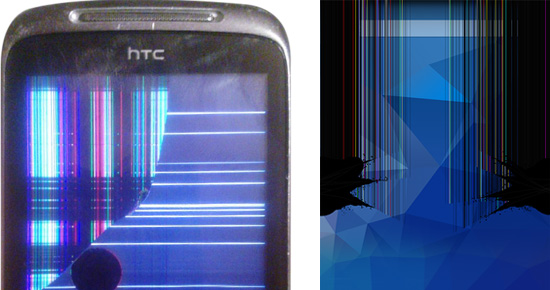
Using this microcircuit, which is located on the cable, controlled image transfer to the display. The controller breaks due to mechanical impact, that is, from a strong fall or impact. It can also be damaged by liquid.
If the controller is damaged, the image may disappear altogether: the screen becomes completely white or black. But most often, when the controller breaks, multi-colored vertical stripes appear. If you press on the screen, the stripe configuration will change.
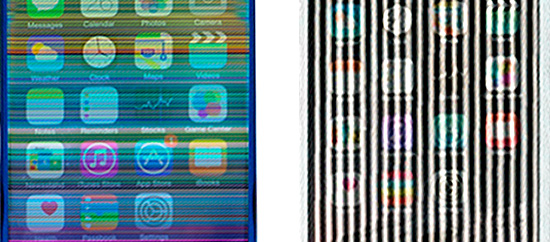
It happens that the image may disappear only in one place on the display. Such a spot will have clear boundaries, and the rest of the screen will display a normal picture.
Note! If the backlight disappears on both the screen and the buttons, the problem is most likely with the board.
If a small dot of red, blue or Green colour, which means there are dead pixels.
Dead pixel is a separate element that loses the ability to change its color.
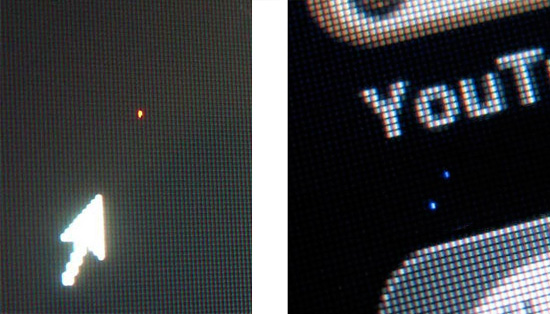
Manufacturers often indicate the quality class of monitors based on valid number dead pixels.
There are 4 classes in total:
Ⅰ - there are practically no dead pixels. If a dead pixel appears, the manufacturer undertakes to repair it under the terms of the warranty or replace the display;
Ⅱ - the presence of 2 defective pixels (white or black) is allowed;
Ⅲ - the presence of 5 white, 15 black and 50 colored dead pixels is allowed;
Ⅳ - 50 white, 150 black and up to 500 colored dead pixels are allowed.
It is worth noting that the quality class of the display directly proportionally affects the price of the spare part. The higher the quality, the more expensive the display is.
Today Problem with the display sticking to the sensor mainly occurs in budget smartphones.
In inexpensive models, there is an air gap between the display and the sensor. When the space between the display and the sensor is reduced, they can stick together and remain in this state for a long time.
The bonding stain can be easily recognized. It is noticeable when the display is turned off and may partially disappear when the backlight is on. It looks like liquid squeezed between glass. When faced with such a problem, users often think that water has entered the device. It is possible to remove such a stain, but to do this you need to re-glue the touch screen.

Module delamination
Delamination in the display module is a type of defect that is classified as a manufacturing defect. A sensor that is poorly glued during the manufacture of the module eventually begins to lag behind the display around the perimeter. As a result, white spots appear. This defect is extremely rare. In this case, the display must be replaced under warranty conditions.
If any stain appears on the screen of your device, contact a specialized service center. It is almost impossible to replace or repair damage to the backlight or display module at home. For repairs, you must use special equipment and have certain skills in repairing equipment.
If you know which specific part needs to be replaced, you can purchase it from our website. To find the right spare part or find a replacement, we recommend reading ours.
Have you ever noticed strange spots on the screen of your smartphone or tablet? The appearance of any spots or streaks on the device screen indicates a malfunction of the display module. Today we will talk about the reasons for their appearance.
Problems with the backlight
Moisture
Quite often, moisture penetration into the device causes stains to appear. The backlight of LCD displays consists of films, an inverter and lamps. The LEDs shine on the side of the plate, and the films scatter the light, forming a uniform backlight on the screen.
If liquid penetrates between the layers of film, they stick together. Where they touch, the light is refracted at the wrong angle and a spot appears on the screen.
As a rule, it has an irregular shape and is characterized by increased brightness. At different angles of inclination, the spot will change its shape or will not be noticeable at all.
If your device has an AMOLED display, then you have no reason to worry. Such screens have a different backlight technology. If a small amount of liquid gets inside the device, a stain will not appear.
If you have problems with your iPhone's backlight, you can replace it. You can purchase a new backlight for the display.
Manufacturing defects
Stain due to a manufacturing defect occurs during display assembly and very often appears to be a stain caused by moisture. The manufacturer may incorrectly select the length of the screws, which is why they rest against the back of the display and lead to the films being compressed together.
Such a spot has an oval shape and does not change at different angles. By the same principle, stains are formed from foreign objects, such as sand.
Occurs in devices in which the manufacturer has not made the correct heat sink. In the place where the device overheats, the films are deformed from constant exposure to high temperature. After the smartphone or tablet cools down, it no longer takes its original shape and a spot forms at the point of overheating. Most often, spots from overheating appear at the ends of the display and have a yellow tint. This spot is darker in the middle and lighter towards the edges.

Overheating spots do not change shape from different viewing angles and may become stronger over time.
LED backlight malfunction
LED backlight problems most often manifested by the appearance of a local black spot or deterioration of the backlight in general. The spot forms where the LEDs fail.
Backlight repair– a rather labor-intensive process and takes a lot of time. If the backlight of a smartphone or tablet is broken, it is recommended to replace the display module.
Display problems
After a fall or impact, the image on some part of the screen disappears - this is a sign of a broken display. A spot of this origin most often has an irregular shape, cracks may spread from it, and if you press on it, its size may increase, and its shape may also change.

Using this microcircuit, which is located on the cable, controlled image transfer to the display. The controller breaks due to mechanical impact, that is, from a strong fall or impact. It can also be damaged by liquid.
If the controller is damaged, the image may disappear altogether: the screen becomes completely white or black. But most often, when the controller breaks, multi-colored vertical stripes appear. If you press on the screen, the stripe configuration will change.

It happens that the image may disappear only in one place on the display. Such a spot will have clear boundaries, and the rest of the screen will display a normal picture.
Note! If the backlight disappears on both the screen and the buttons, the problem is most likely with the board.
If a small dot of red, blue or green appears on a plain black or white screen background, it means there are dead pixels.
Dead pixel is a separate element that loses the ability to change its color.

Manufacturers often indicate the quality class of monitors based on the permissible number of dead pixels.
There are 4 classes in total:
Ⅰ - there are practically no dead pixels. If a dead pixel appears, the manufacturer undertakes to repair it under the terms of the warranty or replace the display;
Ⅱ - the presence of 2 defective pixels (white or black) is allowed;
Ⅲ - the presence of 5 white, 15 black and 50 colored dead pixels is allowed;
Ⅳ - 50 white, 150 black and up to 500 colored dead pixels are allowed.
It is worth noting that the quality class of the display directly proportionally affects the price of the spare part. The higher the quality, the more expensive the display is.
Today Problem with the display sticking to the sensor mainly occurs in budget smartphones.
In inexpensive models, there is an air gap between the display and the sensor. When the space between the display and the sensor is reduced, they can stick together and remain in this state for a long time.
The bonding stain can be easily recognized. It is noticeable when the display is turned off and may partially disappear when the backlight is on. It looks like liquid squeezed between glass. When faced with such a problem, users often think that water has entered the device. It is possible to remove such a stain, but to do this you need to re-glue the touch screen.

Module delamination
Delamination in the display module is a type of defect that is classified as a manufacturing defect. A sensor that is poorly glued during the manufacture of the module eventually begins to lag behind the display around the perimeter. As a result, white spots appear. This defect is extremely rare. In this case, the display must be replaced under warranty conditions.
If any stain appears on the screen of your device, contact a specialized service center. It is almost impossible to replace or repair damage to the backlight or display module at home. For repairs, you must use special equipment and have certain skills in repairing equipment.
If you know which specific part needs to be replaced, you can purchase it from our website. To find the right spare part or find a replacement, we recommend reading ours.
Number of faults in mobile gadgets is growing in proportion to the emergence of new technologies. Competition is recognized as the culprit of this trouble, because in the race for success you cannot hesitate, otherwise another company will take your place in the sun. As a result, developers do not have time to test devices properly, and imperfect smartphones end up in the hands of consumers.
Problems can vary: from serious ones that impair the performance of the device, to minor ones that spoil the aesthetic component. One of these problems is the yellow spot on the phone screen.
What does the fault look like?
More than half are not insured against this problem modern smartphones. Most often it is mentioned by users of devices from famous brands: Apple, HTC, Samsung (less often than others). But when used for a period of two years or more, such a defect can appear in any brand of device.
A yellow spot on the phone screen can be anywhere, so it is recommended to carefully inspect the gadget when purchasing. It is worth remembering that most often this malfunction is visible on a white background, for example, if the search results are open. The intensity of the defect varies: sometimes it looks like a slight darkening on the display, closer to a brownish tint, but there are also very bright spots, as if oil or glue had been spilled under the glass.
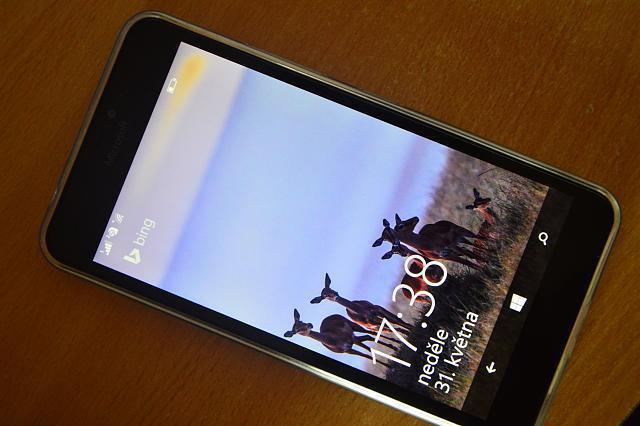
Why is this happening?
If a yellow spot appears on your phone screen, there are several reasons:
- falling of the device from a great height;
- a strong blow to the case from the side or directly to the display;
- long exposure to direct sunlight;
- liquid ingress;
- strong heating from external source(stove, fire, battery, etc.);
- the same as in the previous paragraph, but due to the fault of a faulty battery or processor.
All these factors can cause the transistors of some pixels to fail. Because of this, the latter stop working correctly, producing various effects: from colored or duller areas to a “gasoline” rainbow on the display.
There is no need to despair; at this stage, this can still be corrected.
How to remove a yellow spot from your phone screen?
Attention! The methods described below are not suitable if the gadget malfunction was caused by mechanical damage. In this case, only a complete replacement of the display will help. It is produced both independently and in any service center, so there is no need to worry too much about this.
So what to do in other situations? Unfortunately, there are not many options.
Smartphone overheating
If the defect is caused by high temperatures, you should try to cool the device. To do this, you will need to turn off the device, put it in a sealed bag and... place it in the refrigerator. No, this is not a joke on inexperienced gadget owners! This method really helps, but there is one caveat: the temperature in the chamber must be no lower than +8 degrees Celsius.

You need to keep your smartphone cool for only 10 minutes. It is then removed and left to “warm” at room temperature. The next time you turn it on, the yellow spot on the phone screen should disappear.
However, from the secondary appearance of the defect this method doesn't save.
Spontaneous discovery
If the gadget has not been exposed to high temperatures, you can try another method. This will require special program(like ScreenFix Deluxe only for smartphones), which triggers a high-speed change of pixel colors in the desired area. Sometimes this helps remove the yellow spot on the phone screen, but not in case of a factory fault with the display.
Then all that remains is to contact the warranty service or service center.
